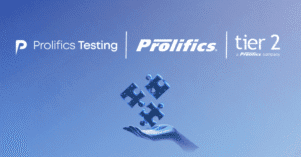You may be hearing this term for the first time, but it’s not a new idea. The Enterprise Service Bus (ESB) we know today was originally conceived by architect Gregor Hohpe in 2000. Back then, he called it an enterprise service router.
It’s a concept that has been around for quite some time and is becoming more popular as companies are trying to make their systems more agile and responsive to changes in the marketplace.
What does ESB do? Essentially, what an ESB does is help connect two different departments or business processes together so they can communicate with each other using shared data. The goal of an Enterprise Service Bus is to create connections between disparate IT services and applications within your organization without requiring code changes.
What Exactly is ESB?
The ESB is a messaging system that enables companies to connect their applications, which leads to more efficiency and scalability. It’s also relevant for organizations with complex IT needs.
The ESB can be seen as the “glue” of your company’s IT infrastructure. The glue allows you to keep all of your company’s data in a single place without having it spread apart across different systems. For example, if your company uses Salesforce but has an application like SharePoint that tracks customer data, then the ESB will enable these two applications to talk to one another so they don’t have duplicate data entry points or information lost in translation between them.
An ESB is not a product. It’s an architecture; it’s a set of rules and principles for integrating numerous applications together over bus-like infrastructure, like the Internet or Ethernet (ESBs are also sometimes called “enterprise app integration” products). Products from different vendors vary in how they provide this service to you—the way that each does it varies significantly–and what capabilities they offer.
Three Architectures of ESB
ESB stands for Enterprise Service Bus, and is a technology designed to provide enterprises with integration capabilities. ESBs are typically used by companies that have complex enterprise applications that need to interact with each other.
The architecture of the ESB will determine how easy it is for these applications to communicate with one another. There are three main architectures: client-server, publish-subscribe and synchronous. Below are the three architectures and their pros/cons in more detail so you can make an informed decision about which one best fits your needs!
1. Client Server Architecture
This is the most common architecture for ESBs. A bus (typically a TCP/IP connection) runs between the communicating applications, and messages are sent back and forth over that bus. This approach can work great if you have relatively simple needs – but as your requirements grow more complex it becomes difficult to manage everything through one central point on the network.
2. Publish Subscribe Architecture
In publish subscribe architectures, there’s typically no centralized server or hub where all communication takes place – instead each application acts independently from every other so they don’t need to communicate with any outside entity at all! The downside of this design is when two different apps want to send data updates to ALL applications listening; these types of requests are typically addressed using the “publish-subscribe model” which can be complex to set up and manage.
3. Synchronous Architecture
This is a newer approach, but it’s growing in popularity because of its simplicity! The architecture uses a message bus that all applications connect to – so whenever any application needs to send or receive data from another app (or vice versa), they do it automatically without having to worry about managing anything themselves. It makes things easier for developers, but if you have very different apps with complicated rules for communication then this might not be an ideal choice for your environment.
ESBs are a way to connect different software applications, which makes it easier for organizations with many different business units. This ability is thanks to the three architectures of an Enterprise Service Bus that exist today. If you’re not sure what the differences between these architectures are or you just want some help crafting your own ESB implementation strategy, we can give you a hand!
Are You Looking for an Enterprise Service Bus (ESB) Implementation Team You Can Trust?
Prolifics, a global digital transformation company, is here to help businesses take charge of their future. With expertise in everything from cloud computing and data analytics to DevOps tools and integration & APIs services for various industries across the globe, Prolifics has been providing digital solutions since 2006 all under one roof.
We provide fast turnarounds on whatever our clients need – whether that’s initial advising or implementation with ongoing analysis – so they can grow without worry about how it will be done. Vision to Value. Faster. Interested in learning more? Contact Prolifics UK today.








